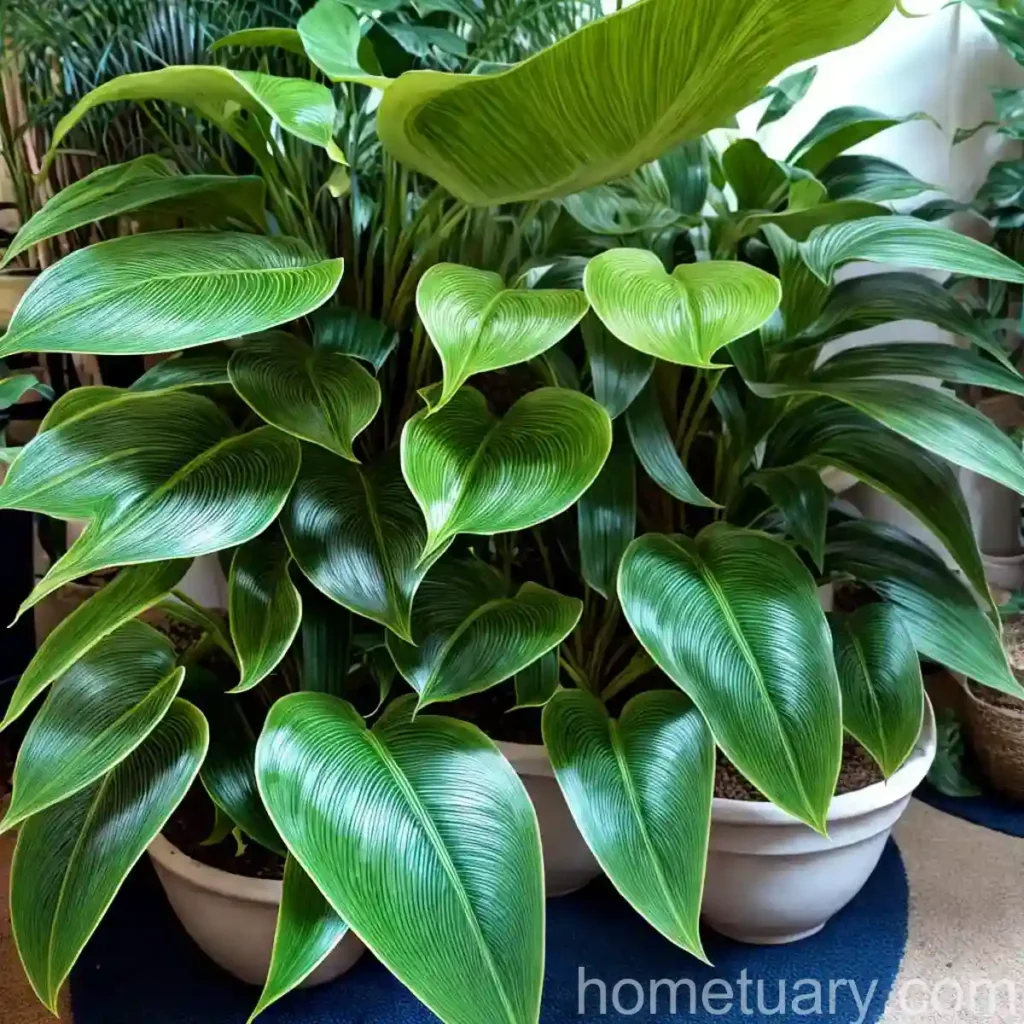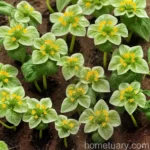Philodendron Jungle Boogie (Philodendron Henderson’s Pride) – A Comprehensive Guide
Philodendron plants are popular choices for indoor greenery, revered for their attractive foliage and low-maintenance care. Among the diverse range of Philodendron varieties, the Philodendron Jungle Boogie (also known as Philodendron Henderson’s Pride) stands out for its unique characteristics and ease of care. In this comprehensive guide, we will explore the key aspects of nurturing and maintaining these exquisite plants, along with their cultural significance, uses, and propagation methods.
What is a Philodendron?
Philodendrons are a group of lush, tropical plants belonging to the Araceae family. These plants are native to the rainforests of Central and South America, where they typically grow on the forest floor or as epiphytes, attached to trees or other support structures. The name “Philodendron” is derived from the Greek words philo (meaning love or affection) and dendron (meaning tree), reflecting their natural inclination to climb and cling to trees in their native habitats.
Philodendron Jungle Boogie (Philodendron Henderson’s Pride)
Philodendron Jungle Boogie, also named Philodendron Henderson’s Pride, is a stunning cultivar renowned for its distinctively patterned leaves and manageable growth habit. The foliage features striking, irregular patterns of dark green and lime green, which manifest vibrantly amidst the lush canopy of this plant. With an upright growth pattern and a moderate size, it is an ideal choice for indoor spaces and is revered for its air-purifying properties, making it a beloved addition to homes and offices alike.
Key Takeaways – Philodendron Jungle Boogie (Philodendron Henderson’s Pride)
Before delving into the intricate care guidelines and cultural aspects of the Philodendron Jungle Boogie, let’s highlight the key takeaways that encapsulate its essence and value as an indoor plant:
- Unique Foliage: The Philodendron Jungle Boogie boasts distinct leaf patterns, with a mix of dark and lime green hues, creating an eye-catching display.
- Manageable Size: With a moderate growth habit, this cultivar remains compact, making it suitable for a wide range of indoor spaces.
- Air Purifying: Like many Philodendron varieties, the Jungle Boogie contributes to indoor air purification by filtering out pollutants and toxins.
- Aesthetically Pleasing: Its vibrant and visually appealing foliage adds a touch of tropical elegance to any indoor environment.
- Low Maintenance: Thriving in moderate conditions and requiring minimal attention, it serves as an excellent option for beginners and experienced plant enthusiasts alike.
Now that we have gained a glimpse into the exceptional qualities of the Philodendron Jungle Boogie, it’s time to delve into the core components of its care and cultivation.
Culture
Understanding the cultural requirements of the Philodendron Jungle Boogie is essential for ensuring its well-being and longevity. From lighting preferences to temperature conditions, being cognizant of the ideal cultural setup for this plant is crucial.
Uses
The multifaceted uses of the Philodendron Jungle Boogie extend beyond its ornamental value. While the primary use revolves around its aesthetic appeal and decorative charm, it also contributes to improving indoor air quality, thereby accentuating its practical significance. Moreover, its manageable size makes it suitable for various decorating and landscaping purposes, adding a touch of tropical allure to spaces such as offices, living rooms, and conservatories.
Water
Proper watering practices are integral to the vitality of the Philodendron Jungle Boogie. While these plants prefer consistently moist soil, they are susceptible to issues related to overwatering if not managed properly. The frequency of watering should be adjusted based on seasonal changes, ensuring that the soil remains evenly moist without becoming waterlogged.
Sunlight
In terms of light requirements, the Jungle Boogie thrives in bright, indirect light. While it can tolerate lower light conditions, providing it with ample indirect sunlight promotes optimal growth and vibrant foliage. However, it is important to shield it from direct sunlight, as prolonged exposure can lead to leaf scorching and diminished overall health.
Fertilizer
Feeding the Philodendron Jungle Boogie with a balanced, liquid fertilizer at a diluted concentration can significantly enhance its growth and foliar development. During the growing season, which typically spans from spring to early fall, regular fertilization every 4-6 weeks can foster lush, vibrant foliage.
Soil
The ideal soil composition for the Philodendron Jungle Boogie should be well-draining and enriched with organic matter. A mixture of peat moss, perlite, and pine bark provides a suitable medium that offers both moisture retention and aeration, contributing to the overall health and vigor of the plant.
Pruning
Pruning serves as a fundamental practice for maintaining the appearance and shape of the Philodendron Jungle Boogie. Removing dead or discolored leaves, as well as any leggy growth, promotes a tidy and attractive appearance. Additionally, periodic pruning can help manage the size of the plant, preventing it from becoming overly unruly.
Propagation
The propagation of Philodendron Jungle Boogie can be achieved through various methods, including stem cuttings and air layering. Stem cuttings from healthy, mature stems can be rooted in water or a suitable rooting medium to generate new plants. Air layering, an advanced propagation technique, involves inducing roots to develop on a section of the stem while it is still attached to the parent plant, facilitating the creation of a new individual.
Container Popularity
Given its moderate size and decorative appeal, the Philodendron Jungle Boogie is a sought-after choice for indoor containers and planters. Its lush foliage and vibrant colors make it an attractive addition to spaces, enhancing their visual appeal and infusing a tropical ambiance.
Common Diseases
Like all plants, the Philodendron Jungle Boogie is susceptible to certain diseases and infections that can compromise its health and vitality. Being familiar with the common diseases and their symptoms is crucial for implementing timely interventions to mitigate their impact.
Disease Diagnosis
Some of the prevalent diseases that affect Philodendron plants, including the Jungle Boogie variety, encompass fungal pathogens such as leaf spot and root rot, as well as bacterial infections. Leaf spot typically manifests as dark lesions on the foliage, while root rot leads to wilting and discoloration of the lower leaves. Bacterial infections can result in yellowing, wilting, and overall decline in plant vigor.
Common Pests
In addition to diseases, the Philodendron Jungle Boogie is also susceptible to infestations by various pests, which can compromise its growth and aesthetic appeal if left unaddressed.
Pests
Common pests that may target Philodendron varieties include spider mites, aphids, scale insects, and mealybugs. These pests can inflict damage by feeding on the plant sap, leading to stunted growth, wilting, and the development of unsightly lesions on the foliage. Regular monitoring and prompt intervention are essential for preventing pest infestations and preserving the health of the plant.
Botanist’s Tips
Drawing from the expertise of botanists and horticultural professionals, the following tips and best practices can guide enthusiasts in nurturing and caring for the Philodendron Jungle Boogie:
- Moderate Lighting: Providing bright, indirect light is ideal for promoting robust growth and vibrant foliage.
- Optimal Watering: Balancing moisture levels within the soil and preventing waterlogging are essential for preventing issues related to root rot.
- Regular Fertilization: Feeding the plant with a balanced, diluted fertilizer at regular intervals during the growing season can enhance its vigor and overall health.
- Proactive Pest Control: Regularly inspecting the plant for signs of pest infestations and implementing targeted treatments to address the issue can prevent widespread damage.
Fun Facts
Unveiling the intriguing aspects and lesser-known facets of the Philodendron Jungle Boogie adds depth to our appreciation for this captivating plant:
- Epiphytic Nature: In its natural habitat, some Philodendron species, including the Jungle Boogie, exhibit an epiphytic growth habit, utilizing trees or other support structures for upward growth.
- Araceae Family: As a member of the Araceae family, Philodendrons bear characteristic inflorescences known as spathes and spadices, which often go unnoticed due to their inconspicuous nature.
- Hybrid Cultivar: The Jungle Boogie variety represents a hybrid cultivar, developed through selective breeding to highlight specific traits, such as its unique foliage patterns.
Links to External Resources
For further insights, detailed care guides, and in-depth information on the Philodendron Jungle Boogie and related topics, explore the following resources:
In conclusion, the Philodendron Jungle Boogie (Philodendron Henderson’s Pride) stands as an exemplary representation of the captivating allure and practical benefits of Philodendron plants. Its distinct foliage, manageable size, and low-maintenance nature consolidate its status as an appealing choice for both novice and experienced plant enthusiasts. By adhering to the recommended care guidelines and understanding its cultural nuances, individuals can cultivate and cherish this exceptional plant, elevating the aesthetics and vitality of their indoor environments.















